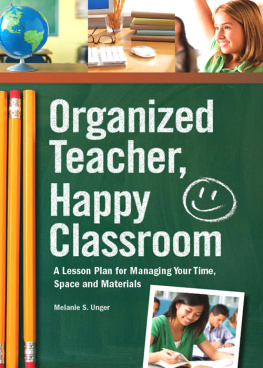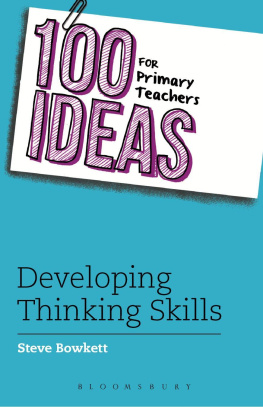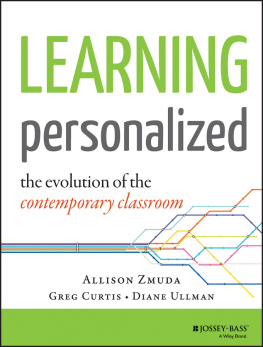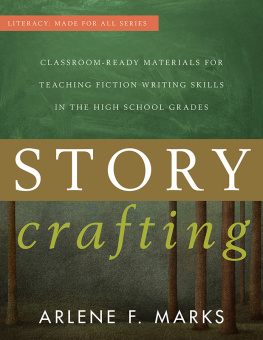

Copyright 2007 by The McGraw-Hill Companies, Inc. All rights reserved. Except as permitted under the United States Copyright Act of 1976, no part of this publication may be reproduced or distributed in any form or by any means, or stored in a database or retrieval system, without the prior written permission of the publisher.
ISBN: 978-0-07-170962-0
MHID: 0-07-170962-2
The material in this eBook also appears in the print version of this title:ISBN: 978-0-07-147280-7, MHID: 0-07-147280-0
All trademarks are trademarks of their respective owners. Rather than put a trademark symbol after every occurrence of a trademarked name, we use names in an editorial fashion only, and to the benefit of the trademark owner, with no intention of infringement of the trademark. Where such designations appear in this book, they have been printed with initial caps.
McGraw-Hill eBooks are available at special quantity discounts to use as premiums and sales promotions, or for use in corporate training programs. To contact a representative please e-mail us at bulksales@mcgraw-hill.com.
TERMS OF USE
This is a copyrighted work and The McGraw-Hill Companies, Inc. (McGraw-Hill) and its licensors reserve all rights in and to the work. Use of this work is subject to these terms. Except as permitted under the Copyright Act of 1976 and the right to store and retrieve one copy of the work, you may not decompile, disassemble, reverse engineer, reproduce, modify, create derivative works based upon, transmit, distribute, disseminate, sell, publish or sublicense the work or any part of it without McGraw-Hills prior consent. You may use the work for your own noncommercial and personal use; any other use of the work is strictly prohibited. Your right to use the work may be terminated if you fail to comply with these terms.
THE WORK IS PROVIDED AS IS. McGRAW-HILL AND ITS LICENSORS MAKE NO GUARANTEES OR WARRANTIES AS TO THE ACCURACY, ADEQUACY OR COMPLETENESS OF OR RESULTS TO BE OBTAINED FROM USING THE WORK, INCLUDING ANY INFORMATION THAT CAN BE ACCESSED THROUGH THE WORK VIA HYPERLINK OR OTHERWISE, AND EXPRESSLY DISCLAIM ANY WARRANTY, EXPRESS OR IMPLIED, INCLUDING BUT NOT LIMITED TO IMPLIED WARRANTIES OF MERCHANTABILITY OR FITNESS FOR A PARTICULAR PURPOSE. McGraw-Hill and its licensors do not warrant or guarantee that the functions contained in the work will meet your requirements or that its operation will be uninterrupted or error free. Neither McGraw-Hill nor its licensors shall be liable to you or anyone else for any inaccuracy, error or omission, regardless of cause, in the work or for any damages resulting therefrom. McGraw-Hill has no responsibility for the content of any information accessed through the work. Under no circumstances shall McGraw-Hill and/or its licensors be liable for any indirect, incidental, special, punitive, consequential or similar damages that result from the use of or inability to use the work, even if any of them has been advised of the possibility of such damages. This limitation of liability shall apply to any claim or cause whatsoever whether such claim or cause arises in contract, tort or otherwise.
Preface
D ue to the success and encouragement received from our first book, The Organized Teacher, Steve Springer, Brandy Alexander, and I decided a second book was in order. In this book, The Creative Teacher, we wanted to incorporate all the ideas that could not fit in our first book because there was not enough space. We wanted to develop a one-stop resource for new teachers in need of immediate ideas to get their curriculum up and running, as well as fresh ideas for veteran teachers searching for something different and more interesting than what they have been using for years.
With these goals in mind, writing this book was as simple as referring to the many boxes, files, resource books, websites, workshops, and conferences the three of us have gathered, visited, or attended through the years. More than anything, we wanted to organize a resource to help teachers make their curriculum come to life. The Creative Teacher does just that.
Being teachers, we developed a list of the many areas we wished we had had at our fingertips as soon as we took over our first classrooms. We also discussed key areas that we felt were left out of many curriculums, even by veteran teachers, because there was not enough time or not enough information to do justice to certain curricular areas, such as book reports, math reviews, social studies research reports, simple science experiments, art projects, and essays. We believe that if there is one resource teachers can consult for such ideas, there will be less need for stacks of supplemental materialswhich busy teachers rarely have time to go through.
Creating this book was a wonderful experience, and we hope new and veteran teachers will find it of great use in preparing their curriculum throughout the year. Steve, Brandy, and I had great fun fingering through the many resources we had used over the yearsteacher-made work-sheets, puppets, report guidelines, and workshop tipsas well as the wonderful ideas we had collected from colleagues, professors in our teacher preparation programs, and our current student teachers. We realized throughout this process how many amazing books are available to help new and veteran teachers, but we also realized how important this book would be in combining these ideas and offering a one-stop resource.
We hope you enjoy this book as much as we enjoyed putting it together.
Kimberly Persiani-Becker, Ed.D.
Acknowledgments
T here is no possibility that this book could have been completed without the help of many people and many resources. Besides the continued support of my husband, family members, and friends while I worked on this book during my off time at the university, I also want to recognize the schools and people who never turned me away as I sought ideas and confirmation.
First, I want to thank Mrs. Annette Kessler, principal of Lenicia B. Weemes Elementary in Los Angeles, and Ms. Kathy Crowe, principal of Windsor Hills Math and Science Aerospace Magnet School in Los Angeles, for opening their doors every quarter to my student teachers from California State University, Los Angeles. Being able to visit these two school sites continuously helped many of the ideas in this book come to fruition. Watching my student teachers, listening to master teachers, and observing things happening at the school sites offered me places to ask questions, confirm curriculum, and check facts.
Next, I want to acknowledge my colleague, Dr. Fred Uy at California State University, Los Angeles, for his guidance and support during the writing of a difficult chapter. His wealth of knowledge, hands-on materials, supplemental books, and quick ideas helped me to formulate and decide on the content of that chapter without compromising key elements that otherwise would have been left out.
I also want to make special mention of the many resources available for teachers, which I consulted throughout the writing of this book. Kidsdomain.com , echantedlearning.com , and askforkids.com are only a handful of the very important websites I used to check my facts and also to add to our creative extension activities for many of the chapters. In addition, graphic organizers.com is an exceptional site to visit when looking for organizational writing ideas for your class. Because we altered and truncated much of the information viewed at these websites, we do encourage teachers to visit the websites in Suggested Reading.
Next page











